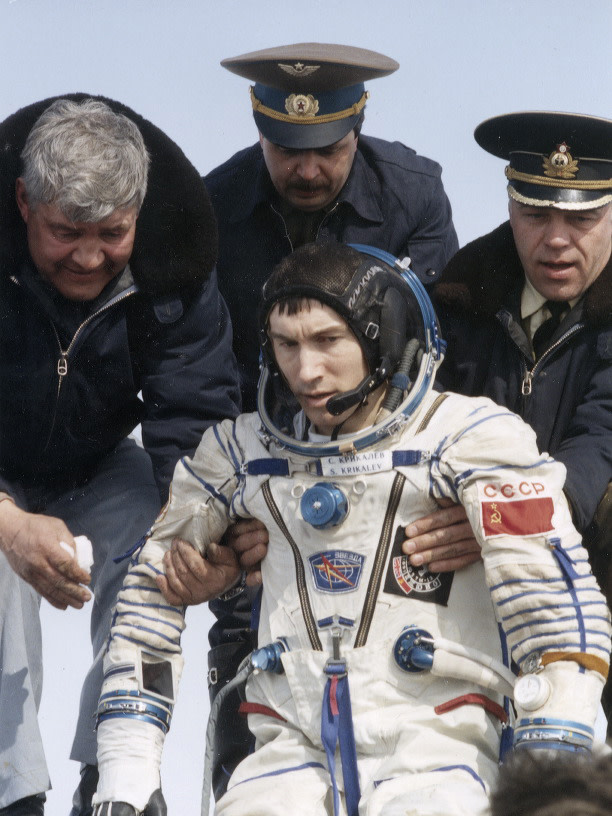In the late 1980s and early 1990s, the Cold War came to an end. Images of the Fall of the Berlin Wall, the execution of Nicolae and Elena Ceausescu, and the independence of former Soviet States were beamed onto TV screens around the world. This was the fall of the Soviet Union and in a short space of time, millions of people that were former Soviet citizens now found themselves in newly formed countries. Their passports were useless and their future was uncertain. There was one Soviet citizen who was watching the fall of the Soviet Union from Space and would go on to be the last Soviet citizen, albeit not on earth. His name was Sergei Krikalev.

Sergei Krikalyov was born in the Soviet city of Leningrad (now Saint Petersburg) back in 1958. After high school, he went on to achieve a degree in mechanical engineering before joining the Soviet space program where he was initially tasked with testing out space flight equipment, developing space operations methods, and taking part in ground control operations.
In 1985, Sergei Krikalyov was selected to follow in the footsteps of Yuri Gagarin and became a Soviet cosmonaut after years of extensive training. In the following years, he would be a feature of numerous launches into space to carry out experiments aboard the Mir station. Krikalev was a ham radio enthusiast and would maintain communications, often once a day, with various amateur radio operators around the world whilst he was in space. This allowed Krikalev to get hold of uncensored western news covering the impending fall of the Soviet Union.
As the 1990s began, it was clear the world was changing fast. Under the policies of Glasnost and Perestroika the Soviet Union was shifting into an unknown direction. McDonalds had opened in Moscow with tens of thousands of people queuing for a chance to taste one of the most iconic symbols of America. Relations between the US government and Soviet regime were simmering considerably and the states that made up the Soviet Union were eyeing independence.

On May 19th, 1991, Krikalev returned to space onboard the Soyuz TM-12 where he remained for months to carry out experiments and maintenance on the Mir station. On the 26th December 1991, the flag of the Soviet Union over the Kremlin was lowered for the last time and marked the fall of the Soviet Union. Krikalev observed this historical moment from space but now faced huge uncertainty. Kazakhstan, like many other Soviet countries, was now an independent state overnight after the collapse of the Soviet Union. Kazakhstan was also home to the landing area for the Soyuz TM-12 in the Baikonur Cosmodrome. As a result, Krikalev was stuck in space two times longer than originally planned for a total of 311 days away from earth.
On March 25th Krikalev the cosmonaut returned to earth technically without a country. He was referred to as ”the last Soviet citizen”. The Cuban musician Silvio Rodríguez attempted to paint a picture of how Krikalev must have felt during his incredibly unique experience in Space in the song Casiopea.
After returning home and dealing with the likely messy paperwork following the dissolution of the Soviet Union, Krikalev resumed his cosmonaut career and carried out a number of space missions in the post-Soviet era. In 2007 he was made Vice President of the S.P. Korolev Rocket and Space Corporation Energia in charge of manned space flights. He is still alive and aged 61.
For groundbreaking tours to the space heritage of the former Soviet Union, check out our range of private and group Soviet tours today!
